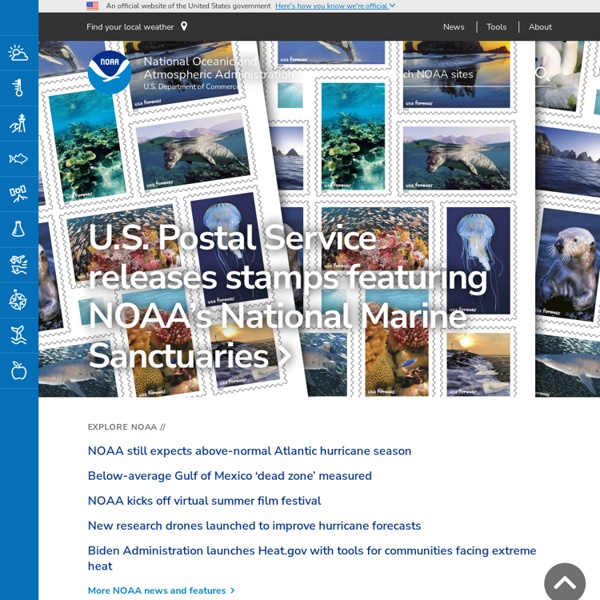



Ocean Acidification Who we are We are a group of scientists who, in 2006, began to assess the chemical and biological effects of Ocean Acidification in the New Zealand context. Early on, we realised that seawater carbonate chemists and marine biologists needed to work together if we are to fully understand how OA might impact our coastal and open oceans. Originally, we were a group of scientists from the University of Otago (Departments of Botany, Chemistry and Marine Science) and the National Institute of Water and Atmospheric Research Ltd (NIWA); today, we collaborate with researchers across New Zealand and overseas. What we do OAR supports OA research across New Zealand, and especially at Otago.
Climate Data Online (CDO) - The National Climatic Data Center's (NCDC) Climate Data Online (CDO) provides free access to NCDC's archive of historical weather and climate data in addition to station history information. Climate.gov The NOAA Climate.gov web portal provides science and services for a climate-smart nation Drought.gov The NOAA Drought.gov web portal provides an integrated drought monitoring and forecasting system at federal, state, and local levels Climate Models The NOAA National Operational Model Archive and Distribution System (NOMADS) is a project providing both real-time and retrospective format independent access to climate and weather model data Satellite The NOAA Comprehensive Large Array-data Stewardship System (CLASS) is an electronic library of NOAA environmental data Climate Data Records The NOAA Climate Data Record Program provides a robust, sustainable, and scientifically defensible approach to producing and preserving climate records from satellite data
Hurricane Tracking Map and Radar Your feedback: What do you think of our interactive map? How can we make it more useful to you? [Click to send feedback] The Human Body: Sites, Activities & Projects Human Body Picturing the Body Learn about common techniques for peering inside the body in order to diagnose disease and injury. Exploring Hair Scientific knowledge and a few chemical concoctions can get you through a Bad Hair Day. National Forecast Maps Surface Analysis Highs, lows, fronts, troughs, outflow boundaries, squall lines, drylines for much of North America, the Western Atlantic and Eastern Pacific oceans, and the Gulf of Mexico. Standard Size | High Resolution Temperature Maximum daytime or minimum overnight temperature in degrees Fahrenheit.
Ocean acidification, Statistics NZ Our oceans have become more acidic by absorbing and storing the high levels of atmospheric carbon dioxide (CO2) emitted mainly from human activities. Ocean acidification is projected to continue for generations if substantial emissions of CO2 from human activities continue. Ocean acidification may cause widespread harm to our marine ecosystems. More acidic waters make shell-building harder for species with carbonate shells, affecting their survival, growth, and reproduction.
Category:Köppen climate classification maps of states of the United States Köppen climate classification[edit] Some Köppen-Geiger maps in Wikimedia Commons are based from this source. Peel, M. C. and Finlayson, B. L. and McMahon, T. A. (2007). State-by-state developments related to Hurricane Irene (CNN) -- On Friday, President Barack Obama said of Hurricane Irene that "all indications point to this being a historic hurricane." Numerous local, state and federal agencies, among other organizations, have taken steps in preparation. Here are some of those measures, for states most affected by Hurricane Irene: Irene was off the South Carolina coast on Friday, with its outer bands bringing gusty winds, heavy rain and dangerous surf.